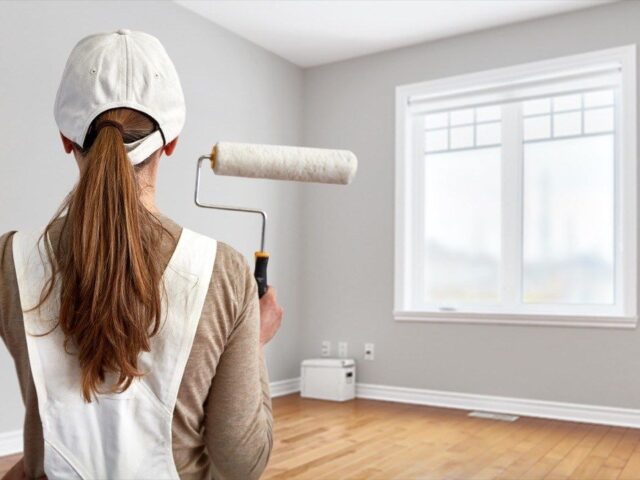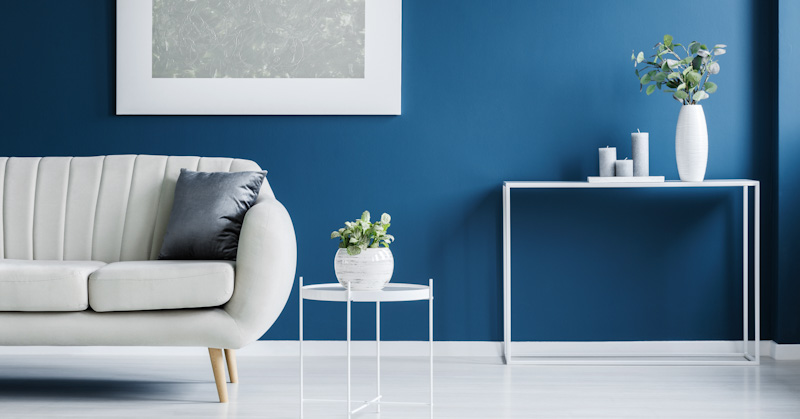Expert Lakewood Interior Painting for Residential and Commercial Properties
Expert Lakewood Interior Painting for Residential and Commercial Properties
Blog Article
Enhance Your Interior Decoration With Comprehensive Shade Appointment
The combination of shade examination into interior design offers a special possibility to improve and raise the psychological and aesthetic resonance of an area. By involving with a seasoned shade professional, you can browse the complexities of shade choice, guaranteeing that your choices not just complement building functions but also reverberate with personal style and emotional effect.
Advantages of Color Consultation

Moreover, color examination help in taking full advantage of all-natural light and maximizing spatial perception. Lighter colors can make a room appear more expansive, while darker shades produce an intimate setting. Cleveland Metro Painting Specialists. This strategic application of color can substantially affect the total setting of any kind of indoor room
In addition, professional consultants possess a detailed understanding of current trends and timeless classics, making certain that the picked colors will certainly continue to be enticing gradually. This insight can save clients from costly redesigns in the future. Shade examination equips customers by offering them with a clear vision and instructions, promoting self-confidence in their design selections and eventually leading to a more successful and rewarding interior style outcome.
Understanding Shade Psychology
The importance of shade psychology in interior decoration can not be overemphasized, as it explores the psychological and psychological results that numerous shades can evoke in people. Colors can affect mood, actions, and also efficiency, making them a vital factor to consider in any type of design job.
For instance, cozy colors such as red, orange, and yellow are frequently linked with energy and heat. They can stimulate sensations of excitement and convenience, making them appropriate for social rooms like living kitchens or areas. Conversely, trendy colors like blue, environment-friendly, and purple have a tendency to stimulate peace and serenity, making them ideal for bedrooms or reflection areas.
Furthermore, using neutral tones can create a balanced setting by allowing the bolder colors to stand out without overwhelming the senses. Comprehending these psychological influences enables designers to produce rooms that not just look aesthetically pleasing however likewise advertise emotional health.
Including color psychology into interior style includes a thoughtful option of tones tailored to the designated function of each area, eventually boosting the total experience for its residents. This recognition is essential for accomplishing a unified and practical indoor setting.
The Color Wheel Explained
Comprehending the connections between shades is vital for efficient indoor style, and the shade wheel acts as a valuable tool in this procedure. The color wheel, established by Isaac Newton in the 17th century, shows the spectrum of colors arranged in a circular format. It comprises primaries-- red, blue, and yellow-- that can not be developed by blending various other colors. Secondary shades, created by integrating main colors, include environment-friendly, orange, and purple. Tertiary colors result from blending a key and an additional color, leading to hues such as turquoise and red-orange.
The shade wheel assists designers grasp the Color Consultation in Lakewood partnerships between shades, consisting of complementary, analogous, and triadic schemes. Corresponding colors, located opposite each other on the wheel, produce dynamic contrasts that can stimulate an area. Similar colors, situated next off to each other, give a harmonious and cohesive appearance. Triadic schemes make use of three equally Find Out More spaced shades, using balance and aesthetic interest.
Using the color wheel in interior decoration not only boosts aesthetic charm yet also evokes certain feelings and atmospheres, making it an essential recommendation for shade assessment. Understanding these partnerships ultimately equips developers to develop spaces that are both practical and aesthetically captivating.
Selecting the Right Combination
A well-chosen shade plan can merge an area, improve its functions, and evoke desired emotions. Different rooms offer diverse features and need palettes that reflect their desired usage; for circumstances, serene colors such as soft blues or greens function well in rooms, promoting leisure.
Light can substantially change how shades appear, so it is important to analyze the area at various times of the day. An unified combination ought to complement these attributes, producing a cohesive appearance throughout the space.
When picking colors, utilize the 60-30-10 policy, which suggests that 60% of the area ought to be a dominant shade, 30% an additional shade, and 10% an accent color. This proportion guarantees balance and aesthetic interest (Cleveland Metro Painting Specialists). Ultimately, sample shades on the walls before devoting, as this enables you to see how the colors interact with one an additional and the total atmosphere they develop in your interior design job.
Collaborating With a Shade Consultant

When dealing with a color consultant, the process commonly starts with an initial consultation. Throughout this conference, you'll review your vision, choices, and the existing aspects in your area. The consultant will assess your needs and might advise details shade combinations click for more that line up with your goals.
After establishing a direction, the professional will certainly supply samples and visual aids to aid you imagine the suggested color pattern. This action is critical, as shades can appear differently under differing lights problems.
Furthermore, a color professional can assist you in choosing complementary home furnishings, artwork, and devices to integrate with your chosen palette. By teaming up carefully, you can achieve a polished aesthetic that boosts your insides and creates an inviting atmosphere. Eventually, the expertise of a shade specialist can substantially enhance the total impact of your layout job.
Conclusion
In recap, thorough color assessment serves as an essential device for improving interior layout. By leveraging specialist knowledge of color psychology and spatial characteristics, a customized shade palette can be established to stimulate particular emotions and create a harmonious atmosphere.
By engaging with an experienced shade specialist, you can navigate the complexities of color choice, making sure that your selections not only complement architectural features but also resonate with personal style and psychological impact. It makes up primary colors-- red, blue, and yellow-- that can not be created by mixing other colors.The color wheel helps developers understand the partnerships in between colors, including complementary, analogous, and triadic plans.When picking shades, use the 60-30-10 policy, which recommends that 60% of the area ought to be a dominant color, 30% an additional color, and 10% an accent color. By leveraging professional knowledge of shade psychology and spatial dynamics, a tailored color palette can be established to evoke specific feelings and produce a harmonious atmosphere.
Report this page